Cabletron Systems SmartSwitch 9000 9T122-24 Reference guide
- Type
- Reference guide
This manual is also suitable for
Cabletron Systems SmartSwitch 9000 9T122-24 enables users to monitor and configure a variety of networking devices, including routers, switches, and access points. The 9T122-24 model is specifically designed for use with Token Ring networks, and it offers a range of features that make it an ideal choice for businesses and organizations of all sizes.
One of the key features of the 9T122-24 is its ability to bridge between Token Ring and FDDI networks. This allows users to connect devices on different types of networks, and it can help to improve the overall performance and reliability of the network. The 9T122-24 also supports a variety of other features, including:
Cabletron Systems SmartSwitch 9000 9T122-24 enables users to monitor and configure a variety of networking devices, including routers, switches, and access points. The 9T122-24 model is specifically designed for use with Token Ring networks, and it offers a range of features that make it an ideal choice for businesses and organizations of all sizes.
One of the key features of the 9T122-24 is its ability to bridge between Token Ring and FDDI networks. This allows users to connect devices on different types of networks, and it can help to improve the overall performance and reliability of the network. The 9T122-24 also supports a variety of other features, including:




















-
 1
1
-
 2
2
-
 3
3
-
 4
4
-
 5
5
-
 6
6
-
 7
7
-
 8
8
-
 9
9
-
 10
10
-
 11
11
-
 12
12
-
 13
13
-
 14
14
-
 15
15
-
 16
16
-
 17
17
-
 18
18
-
 19
19
-
 20
20
-
 21
21
-
 22
22
-
 23
23
-
 24
24
-
 25
25
-
 26
26
-
 27
27
-
 28
28
-
 29
29
-
 30
30
-
 31
31
-
 32
32
-
 33
33
-
 34
34
-
 35
35
-
 36
36
-
 37
37
-
 38
38
Cabletron Systems SmartSwitch 9000 9T122-24 Reference guide
- Type
- Reference guide
- This manual is also suitable for
Cabletron Systems SmartSwitch 9000 9T122-24 enables users to monitor and configure a variety of networking devices, including routers, switches, and access points. The 9T122-24 model is specifically designed for use with Token Ring networks, and it offers a range of features that make it an ideal choice for businesses and organizations of all sizes.
One of the key features of the 9T122-24 is its ability to bridge between Token Ring and FDDI networks. This allows users to connect devices on different types of networks, and it can help to improve the overall performance and reliability of the network. The 9T122-24 also supports a variety of other features, including:
Ask a question and I''ll find the answer in the document
Finding information in a document is now easier with AI
Related papers
-
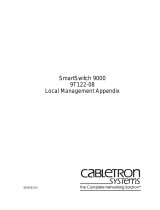 Cabletron Systems SmartSwitch 9000 9T122-08 User manual
Cabletron Systems SmartSwitch 9000 9T122-08 User manual
-
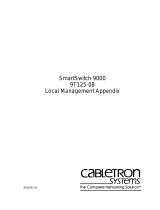 Cabletron Systems 9000 Reference guide
Cabletron Systems 9000 Reference guide
-
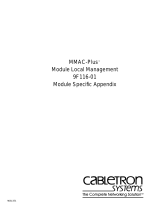 Cabletron Systems MMAC-Plus 9F116-01 Reference guide
Cabletron Systems MMAC-Plus 9F116-01 Reference guide
-
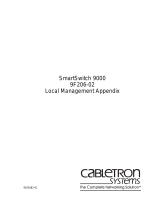 Cabletron Systems 9F206-02 User manual
Cabletron Systems 9F206-02 User manual
-
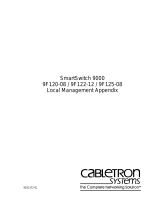 Cabletron Systems 9F120-08 User manual
Cabletron Systems 9F120-08 User manual
-
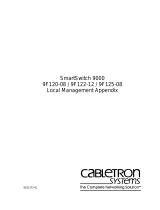 Cabletron Systems 9F120-08 User manual
Cabletron Systems 9F120-08 User manual
-
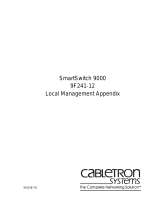 Cabletron Systems 9F241-12 Appendix
Cabletron Systems 9F241-12 Appendix
-
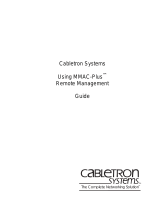 Cabletron Systems MMAC-Plus Management Manual
Cabletron Systems MMAC-Plus Management Manual
-
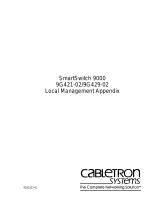 Cabletron Systems 9G421-02 User manual
Cabletron Systems 9G421-02 User manual
-
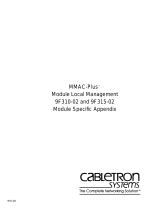 Cabletron Systems MMAC-Plus 9F310-02 Appendix
Cabletron Systems MMAC-Plus 9F310-02 Appendix
Other documents
-
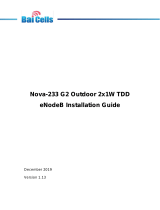 Baicells Nova-233 G2 Installation Installation
Baicells Nova-233 G2 Installation Installation
-
Tektronix 200 Series User manual
-
Motorola MPC860 PowerQUICC User manual
-
Freescale Semiconductor Switch MPC860T User manual
-
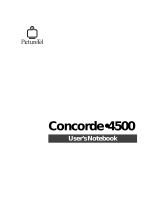 PictureTel 4500 User manual
PictureTel 4500 User manual
-
Aastra IP User manual
-
Aastra VentureIP 480i User manual
-
Kodak 3H0610 User manual
-
Motorola MPC8260 PowerQUICC II User manual
-
Aastra VentureIP 480i User manual

















































